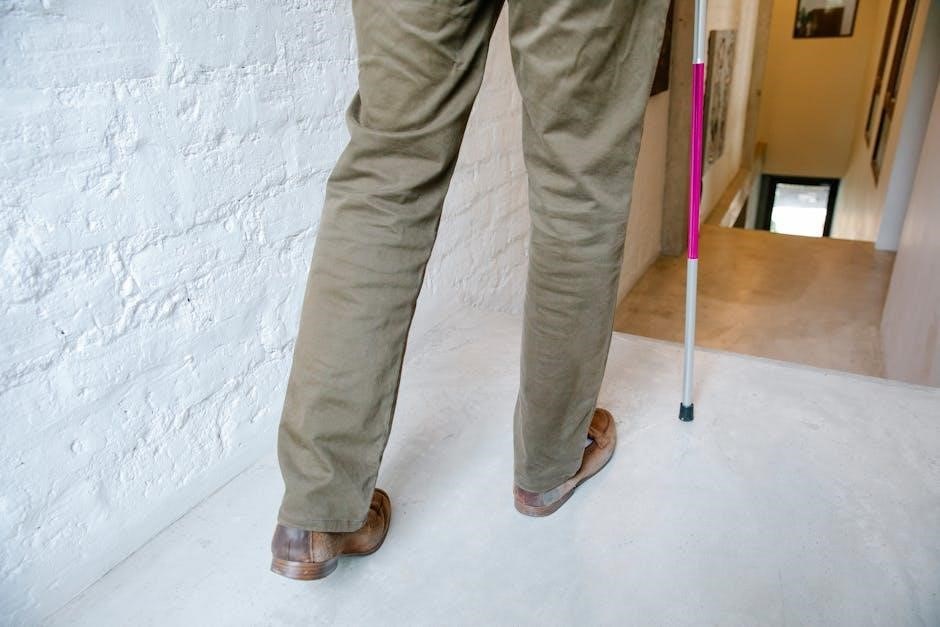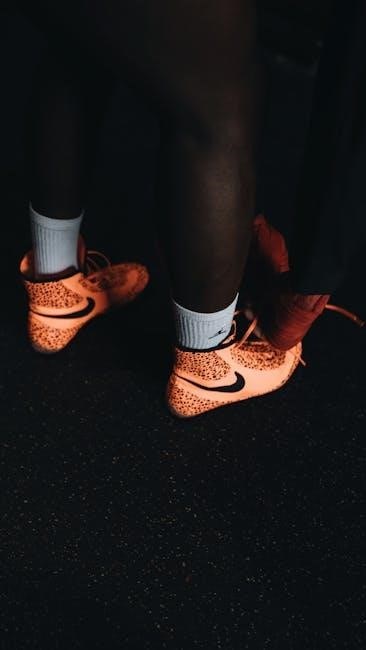Finding the right shoe width is essential for comfort and foot health. Shoes that are too narrow or too wide can cause discomfort, blisters, and long-term foot problems. Understanding shoe width measurements ensures a proper fit.
Wearing shoes with the correct width is crucial for maintaining foot health and overall comfort. Shoes that are too narrow can constrict the foot, leading to pinched nerves, bunions, and blisters. Conversely, shoes that are too wide can cause the foot to slide around, resulting in instability and chafing. Proper shoe width ensures that your foot is supported correctly, reducing the risk of foot pain and injuries.
Additionally, appropriate shoe width can improve your posture and balance. When your feet are properly aligned, it can alleviate stress on your ankles, knees, and hips. This is particularly important for individuals who spend a lot of time on their feet or engage in physical activities. Investing in shoes that fit well is an investment in your long-term well-being;
Moreover, understanding shoe width is essential for individuals with specific foot conditions, such as flat feet, high arches, or bunions. Wearing shoes that accommodate these conditions can provide the necessary support and cushioning, preventing further complications and ensuring maximum comfort.

Understanding Shoe Width Measurements
Shoe width is indicated by letters, signifying how wide or narrow a shoe is. Understanding these measurements is vital for a comfortable fit. Widths vary between men’s and women’s shoes.
Standard Shoe Widths for Men and Women
Importance of Proper Shoe Width
Proper shoe width is crucial for foot health and overall comfort. Shoes that are too narrow can cause blisters, bunions, and nerve damage, while shoes that are too wide can lead to instability and chafing. Wearing the correct shoe width ensures that your feet are properly supported, reducing the risk of foot pain and injuries.
Ill-fitting shoes can also affect your posture and gait, leading to problems in your knees, hips, and back. Properly fitted shoes distribute your weight evenly, promoting better balance and alignment. This is especially important for individuals who spend long hours on their feet or engage in high-impact activities.
Furthermore, appropriate shoe width can improve athletic performance. Shoes that fit well allow for natural foot movement, enhancing agility and efficiency. Whether you’re running, walking, or participating in sports, the right shoe width can make a significant difference in your comfort and performance.
Narrow Shoe Widths (AAA, AA, A, B/C)
Narrow shoe widths cater to individuals with slender feet, ensuring a snug and comfortable fit. These widths, designated as AAA, AA, A, and B/C, provide a more secure feel, preventing excessive movement within the shoe that can lead to blisters and discomfort. Finding the right narrow width is crucial for those whose feet often slip out of standard-width shoes.
AAA is the narrowest available width, followed by AA and A, each offering a progressively wider fit within the narrow category. The B/C width is often considered a borderline size, suitable for those who find standard B width slightly too wide but not narrow enough for a true A width.
When selecting narrow shoes, it’s essential to consider the specific brand and style, as width measurements can vary slightly. Always measure your foot width accurately and consult shoe width charts to ensure the best possible fit. Proper fit minimizes the risk of foot problems and enhances overall comfort, particularly for individuals with narrow feet.
Wide Shoe Widths (E, EE/2E, EEE/3E, EEEE/4E)
Wide shoe widths are designed to accommodate individuals with broader feet, offering increased comfort and preventing constriction. These widths, denoted as E, EE/2E, EEE/3E, and EEEE/4E, provide ample room for the foot to spread naturally, reducing pressure points and minimizing the risk of discomfort and foot problems. Selecting the correct wide width is essential for those who experience squeezing or tightness in standard-width shoes.
E represents the initial wide width, with EE/2E offering a more generous fit. EEE/3E provides even greater width, while EEEE/4E is the widest available option, catering to individuals with exceptionally broad feet. The progression in width ensures a tailored fit for various foot sizes and shapes.
When choosing wide shoes, it’s important to consider the specific brand and style, as width measurements can vary. Accurate foot width measurement and consulting shoe width charts are crucial for optimal fit. Proper width selection promotes foot health, enhances comfort, and allows for natural foot movement, especially for those with wide feet.

Measuring Your Foot Width at Home
Accurately measuring your foot width at home is crucial for finding shoes that fit comfortably. This process ensures proper support and prevents foot problems associated with ill-fitting footwear.
Tools Needed for Measurement
To accurately measure your foot width at home, you’ll need a few simple tools. First, gather a piece of paper larger than your foot to ensure you can trace its entire outline without any edges being cut off. Next, you’ll need a pen or pencil to carefully trace around your foot, capturing its true shape.
A ruler or measuring tape, preferably one with millimeter markings, is essential for precise measurements. You’ll use this to determine the widest point of your foot. Additionally, consider having a flat, hard surface to stand on while tracing, as this will provide a stable base for accurate results.
Finally, ensure you have socks of the thickness you would typically wear with shoes. Measuring with socks on will provide a more realistic width measurement for shoe fitting. These tools will help you get the most accurate measurement possible.
Step-by-Step Guide to Measuring Foot Width
Follow these steps to accurately measure your foot width; First, place a piece of paper on a flat, hard surface. Stand on the paper with your heel firmly against a wall. Wear the socks you would normally wear with your shoes.
Next, carefully trace the outline of your foot with a pen or pencil. Ensure the pen is held vertically to get an accurate tracing; Once you have the tracing, use a ruler or measuring tape to measure the widest part of your foot. This is typically across the ball of your foot.
Record this measurement in inches or millimeters. Repeat the process for your other foot, as foot sizes can vary slightly. Use the larger of the two measurements when consulting a shoe width chart. This will help you determine the correct shoe width for your feet and ensure a comfortable fit. Remember to measure at the end of the day, as your feet may swell during the day.

Shoe Width Charts and Conversion
Shoe width charts are essential tools for finding the right fit. These charts correlate foot width measurements with standard shoe width sizes, helping you select shoes that provide optimal comfort and support.
US Shoe Width Chart for Women
Understanding the US shoe width chart for women is crucial for finding shoes that fit properly. Women’s shoe widths typically range from AAA (extra narrow) to EE (extra wide), with B being the standard or medium width. It is important to note that shoe sizes can vary slightly between brands, so consulting a specific brand’s size chart is always a good idea.
The chart provides a reference point for matching your foot width measurement to the corresponding shoe width size. For example, a woman with a foot width of 3.2 inches might typically wear a size 6B. However, if her foot falls between sizes, it’s generally recommended to choose the larger size.
Remember that factors like foot shape and sock thickness can also influence the ideal shoe width. Always measure your feet accurately and consider these factors when consulting the shoe width chart to ensure the best possible fit.
US Shoe Width Chart for Men
Navigating the US shoe width chart for men is essential for securing a comfortable and well-fitting pair of shoes. Men’s shoe widths typically span from AAA (extra narrow) to EEEE (extra extra extra wide), with D commonly recognized as the standard or medium width.
The width chart is a valuable resource for correlating your foot width measurement to the appropriate shoe width size. For instance, a man with a foot width of 4 inches might generally wear a size 9D. However, bear in mind that shoe sizes can differ slightly among brands, so it’s prudent to consult the specific brand’s size chart whenever possible.
Keep in mind that factors such as foot shape, sock thickness, and the type of shoe can also impact the ideal shoe width. Always ensure an accurate foot measurement and factor in these considerations when using the shoe width chart to achieve the best possible fit and comfort.

Tips for Finding the Right Shoe Width
Securing the right shoe width is paramount for foot comfort and health. Start by measuring your feet accurately, ideally at the end of the day when they are at their largest.
When trying on shoes, wear socks of the thickness you typically use. Ensure you have ample wiggle room for your toes and that there’s no pinching or squeezing on the sides of your feet. Walk around in the shoes to assess the fit and comfort level.
Pay attention to how the shoe feels throughout the day. Feet can swell, so a shoe that feels comfortable in the morning might become too tight later on. Consider trying different brands and styles, as shoe widths can vary. If you have specific foot conditions, consult with a podiatrist for personalized recommendations.
Finally, don’t hesitate to seek expert fitting assistance at shoe stores, where trained staff can help you find the perfect width for your feet.
